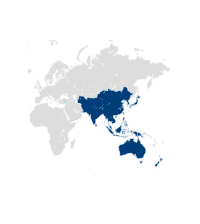Select your region and language
How AI is Applied in Embedded Computing Systems Designs Aligned to SOSA
Taking certain design principles into account will enable meeting system requirements.
Blog Post
How AI is Applied in Embedded Computing Systems Designs Aligned to SOSA
“AI technologies are the most powerful tools in generations for expanding knowledge, increasing prosperity, and enriching the human experience.” — National Security Commission on Artificial Intelligence; 2021 Final Report
In a world where the amount of data inputs and video feeds continue to increase, embedded system designers need the tools and means to properly manage these inputs and make this data actionable. For mission-critical and safety-related military and defense operations, this task becomes even more important.
Implementing AI-based solutions in rugged embedded computing isn’t the only trend affecting system development. The mandate across the US DoD (Department of Defense) for systems and electronics to be interoperable across all platforms and manufacturers is driving change within the industry as well.
Fortunately, the SOSA™ Technical Standard, one of the open standards initiatives supported by the DoD’s Modular Open System Approach (MOSA), is enabling the needed level of data computation and processing that AI requirements mandate. The ability for systems to utilize a common architecture provides the means for quick development of advanced processing capabilities that enables AI-based computation.
Supporting AI Infrastructure Through SOSA
AI applications make use of SBCs, and GPGPUs and FPGA accelerators with an embedded system. In SOSA, the boards that implement them are called PICs or Plug-In Cards.
It’s the actual application — ISR, EW, etc. — that drives the algorithms and data sets specific to the use case, which in turn drives the system topology.
Some system implementations may require more than one accelerator, or GPGPU. Because GPGPUs or accelerators require use of the Expansion Plane, a system designed to align with SOSA must consider the connections needed to facilitate data transfers.
Effective System Development
When building an embedded system that will require AI level data processing, as well as adherence to the SOSA Technical Standard, taking into account certain design principles will enable you to meet all of your system requirements.
- Design Considerations:
- What SOSA PIC Profiles are required? I/O or compute-intensive payload (SBC, GPGPU), Peripheral I/O?
- Which topology is driving the interconnect: speed and type?
- Challenges
- How much power is required? Do modules using ±5V and 3.3V need to be supported?
- What is the cooling scheme: conduction or air flow-through?
- Development
- What support is needed for initial development vs. deployment?
As part of ensuring interoperability across different systems and platforms, SOSA restricts the number of acceptable profiles that can be applied in system development. This limited number of design options benefits compute-intensive systems, since profiles get re-used, reducing the need for complex integration efforts.
The goal of the standard is to design a non-proprietary open systems architecture to lower system development costs as well as make system reconfigurability and future system upgrades easier and faster. A key part is ensuring conformance for sensor components and SOSA modules in alignment with the Technical Standard.
Learn more about how the SOSA Technical Standard is facilitating AI in military and defense applications.




